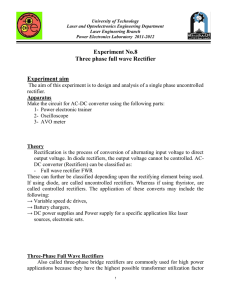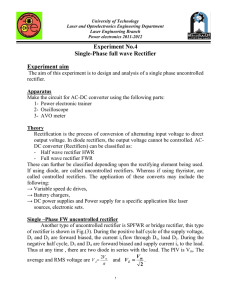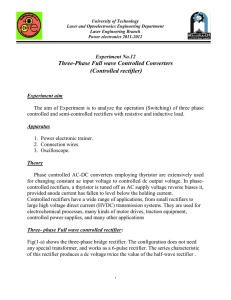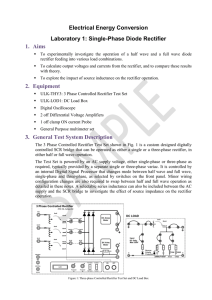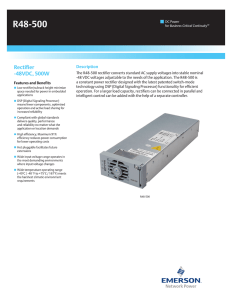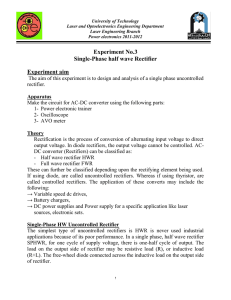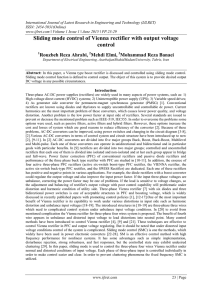Experiment No.7 Three-Phase half wave Uncontrolled Rectifier
advertisement
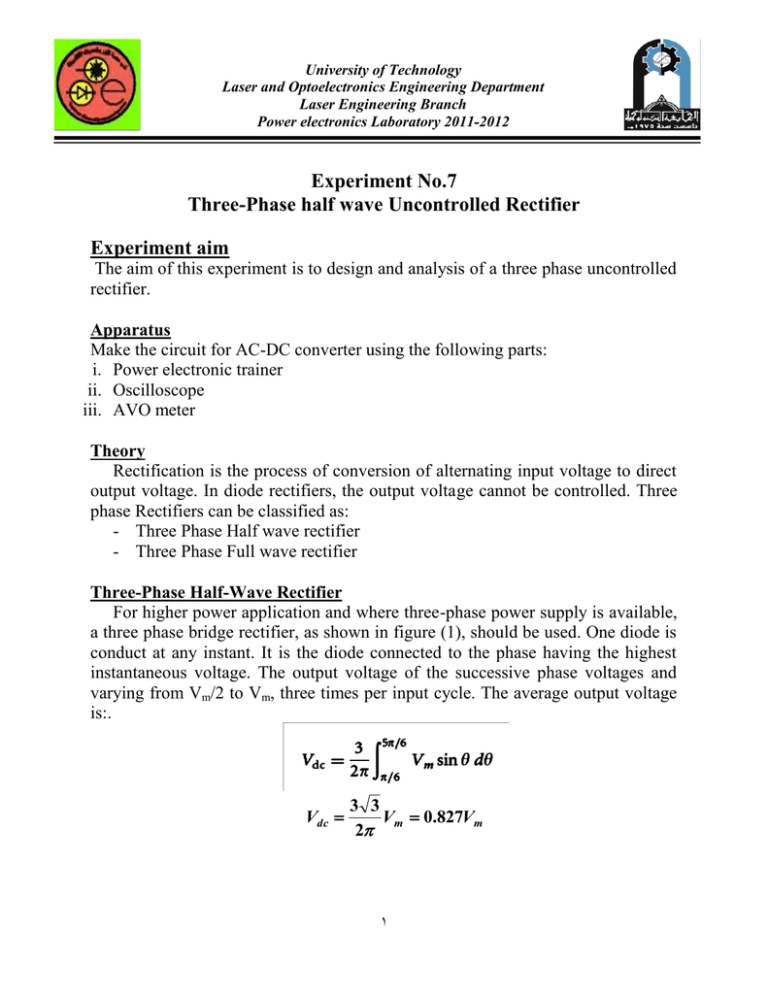
University of Technology Laser and Optoelectronics Engineering Department Laser Engineering Branch Power electronics Laboratory 2011-2012 Experiment No.7 Three-Phase half wave Uncontrolled Rectifier Experiment aim The aim of this experiment is to design and analysis of a three phase uncontrolled rectifier. Apparatus Make the circuit for AC-DC converter using the following parts: i. Power electronic trainer ii. Oscilloscope iii. AVO meter Theory Rectification is the process of conversion of alternating input voltage to direct output voltage. In diode rectifiers, the output voltage cannot be controlled. Three phase Rectifiers can be classified as: - Three Phase Half wave rectifier - Three Phase Full wave rectifier Three-Phase Half-Wave Rectifier For higher power application and where three-phase power supply is available, a three phase bridge rectifier, as shown in figure (1), should be used. One diode is conduct at any instant. It is the diode connected to the phase having the highest instantaneous voltage. The output voltage of the successive phase voltages and varying from Vm/2 to Vm, three times per input cycle. The average output voltage is:. Vdc 3 3 Vm 0.827Vm 2 1 University of Technology Laser and Optoelectronics Engineering Department Laser Engineering Branch Power electronics Laboratory 2011-2012 Similarly, the rms value of the output voltage can be found as: The rectifier has a three pulse characteristics, and load current id of less ripple contents in relative to single-phase rectifiers, which characterize by two pulse output. The ripple frequency is 3f (where f is input frequency) and the required smoothing reactor at the load side is of smaller size. (a) 2 University of Technology Laser and Optoelectronics Engineering Department Laser Engineering Branch Power electronics Laboratory 2011-2012 (b) Fig.(1): a) Three-phase star rectifier. b): Waveforms of voltage and current of the three-phase star rectifier 3 University of Technology Laser and Optoelectronics Engineering Department Laser Engineering Branch Power electronics Laboratory 2011-2012 Procedure 1- Connect the three phase half wave rectifier circuit shown in Fig.(1) on the power electronic trainer. 2- Turn on the power 3- Plot the input and output waveforms on the same graph paper. 4- Measure the average and RMS output voltage by connect the AVO meter across load resistance. 5- Turn off the power 6- Add the inductive load on the output. With L=10mH measure the output voltage and plot the output waveform. 7- Repeat step 6 with L=100mH, 500mH measure the output voltage and plot the output waveforms. 8- Repeat step 6 & 7 with connect the freewheeling diode across the load. Discussion and calculations 1. Compare between the practical and theoretical results for input and output voltages and currents. 2. What design parameters of the three-phase half wave rectifier? 3. When you design 30kW rectifier, what type of rectifier must be use? Why? 4
